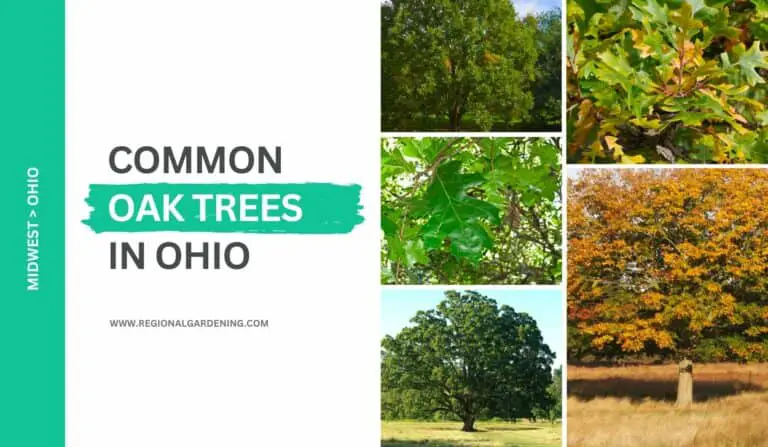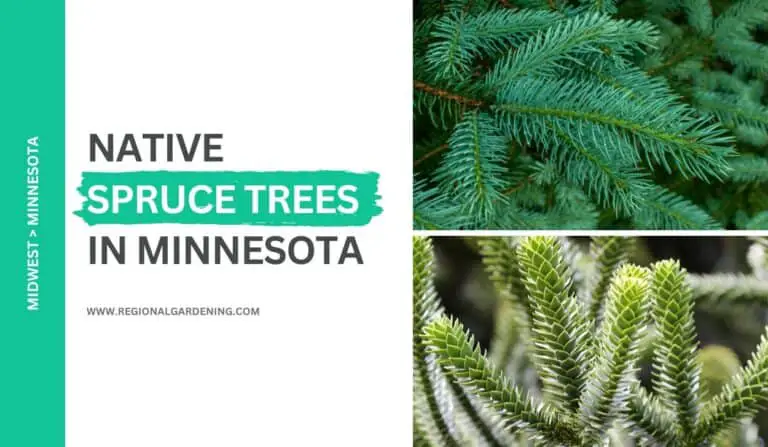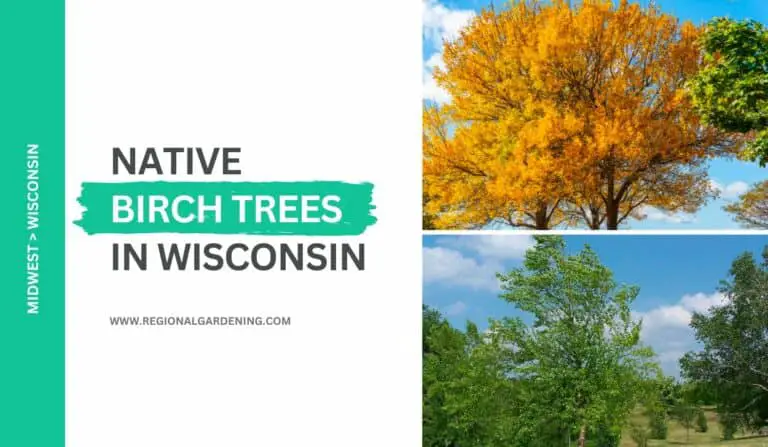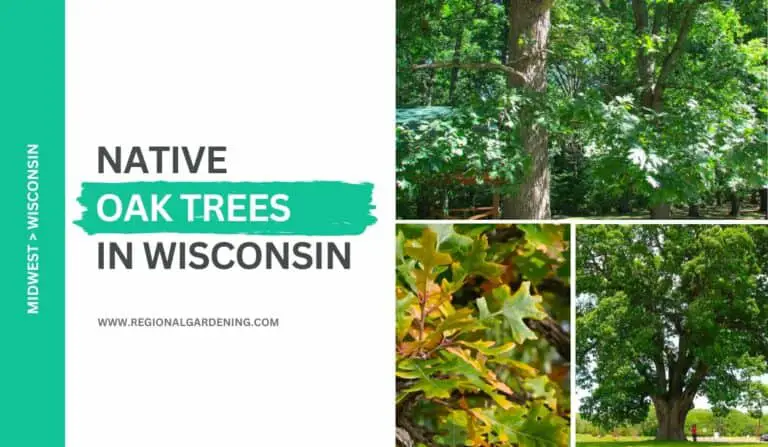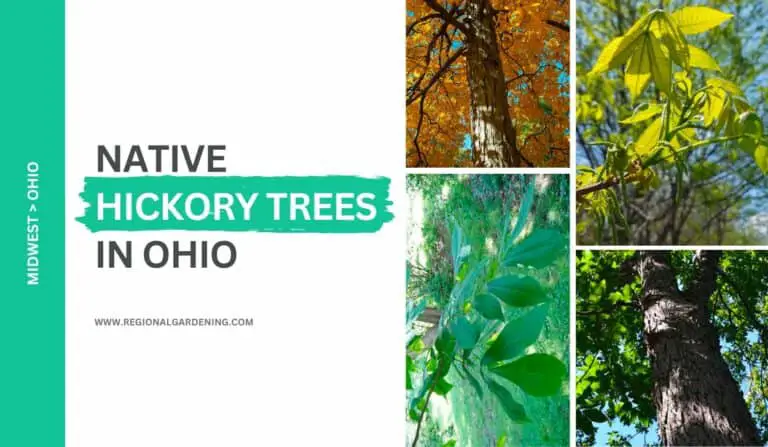3 Native Aspen Trees In Minnesota (Pictures & Identification)
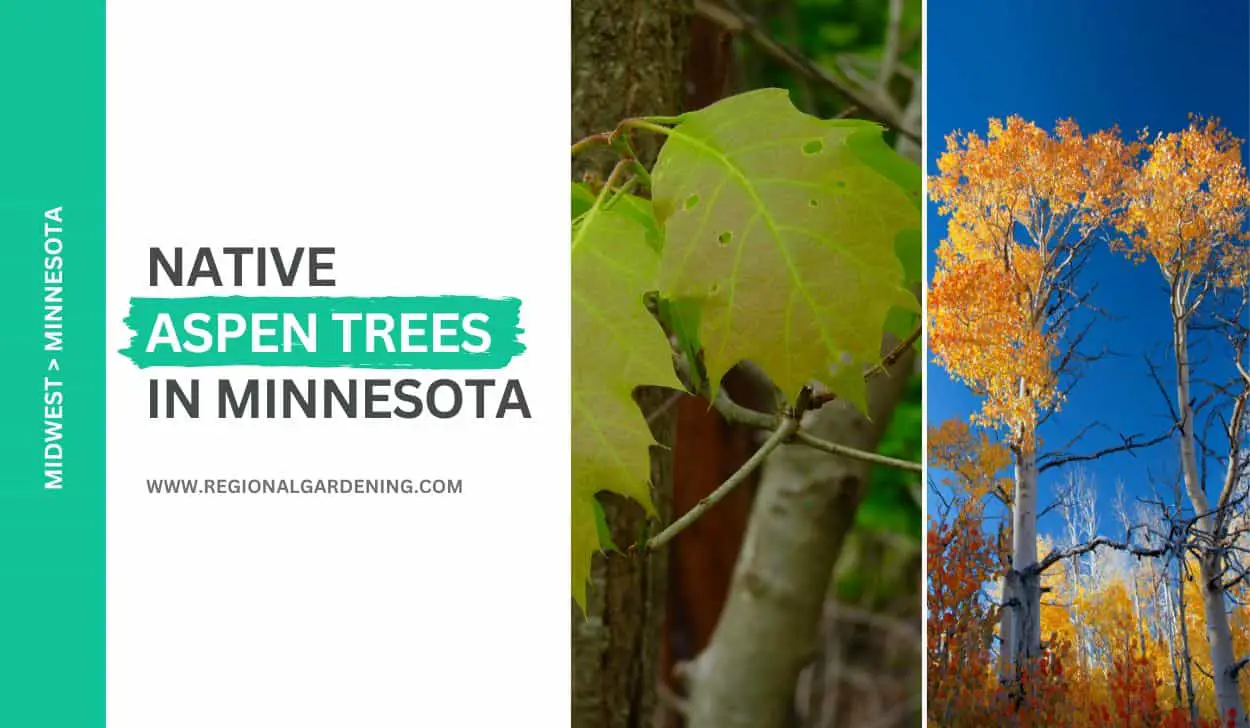
It is very common to see aspen trees in Minnesota and nearby regions. But have you ever wondered what variety of aspen you see down the road?
Or have you ever wondered if the state has any other aspen tree varieties? The answers to your questions can be found here.
There are two native aspen trees in Minnesota. And I’ll show you everything you need to know about the two native species, such as high-quality photos, structural details, habitat and native range, uses, and so on. In addition, I’ll tell you about another tree that many people mistake for an aspen.
So, let’s get started.
1. Quaking Aspen
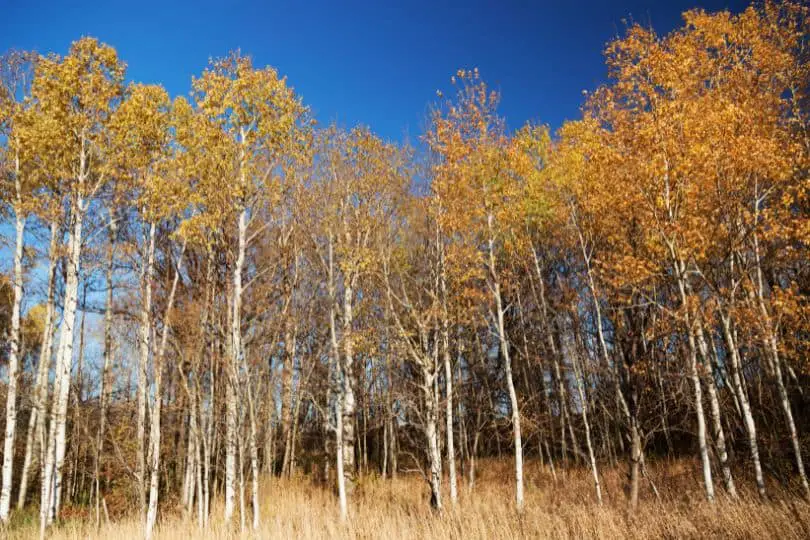
- Common Name: Quaking Aspen, Popple
- Scientific Name: Populus tremuloides
- Mature Height: 65 feet
- Native/Non-Native: Native to Minnesota
- Flowers/Cones: Produces cottony fruit containing tiny round light brown seeds
- Uses: Manufacture of pulpwood for books, magazines and low-grade lumber
The Quaking Aspen, also known as Popple, is the trees species with most number of trees in Minnesota. According to the Minnesota Department of Natural Resources, quaking aspen accounts for over 20% of the state’s forested land, covering more than 10 million acres.
It’s a unique tree with unusual characteristics. It is small to medium in size, growing up to 65 feet tall and with a diameter of up to 20 inches. Its immature branchlets are reddish-brown and lustrous, but they turn gray and roughened after the first year.
The bark of the Quaking Aspen is thin, green, and virtually smooth, turning white to gray-green as it ages. The inner bark is bitter.
Alternating along the stem, the leaves of the Quaking Aspen are small and broadly oval with fine teeth along the margin. They are green and iridescent on top and dull green below.
On robust young branches, the leaves, which are typically 1 to 2 inches long and wide, can grow up to 4 inches long and wide. Due to the flattened leaf stalks, the leaves of this tree tremble or quake in a light breeze, hence the unusual name.
The fruit of the tree ripens in the late spring before the leaves fully grow. It is a cottony mass containing tiny round light brown seeds that germinate within hours of being discharged from the tree.
The Quaking Aspen’s wood is light brown and ringed by dense nearly-white sapwood. It is gentle, not powerful, and only lasts a short time. The tree can be reproduced using “cuttings,” seeds, and suckers. Its wood is used to make pulpwood for books and magazines, as well as low-grade timber.
The Quaking Aspen trees are the most common aspen trees in Minnesota and grows throughout the state. It prefers sandy and gravelly soils. It is frequently found on cut-over ground and is one of the first plants to emerge following cutting or fire.
2. Large Tooth Aspen
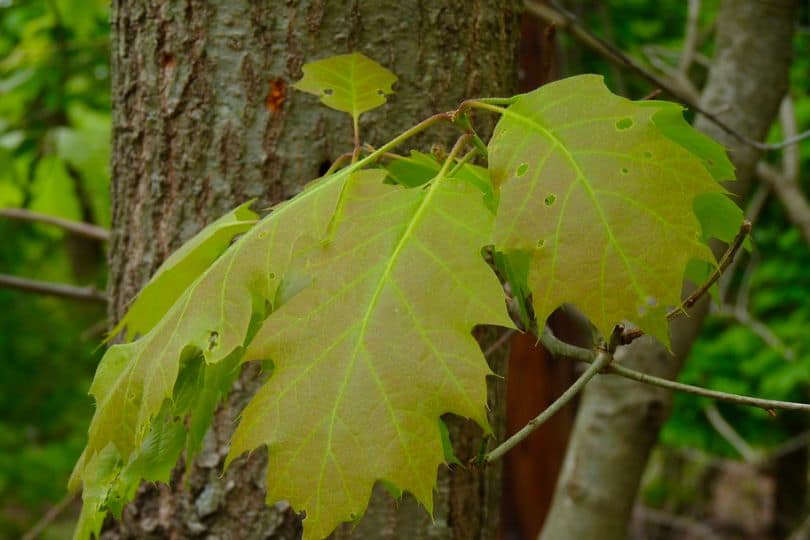
- Common Name: Large-tooth Aspen, Poplar
- Scientific Name: Populus grandidentata
- Mature Height: up to 80 feet
- Native/Non-Native: Native
- Flowers/Cones: Cones
- Uses: Pulp and paper, hardboard, wafer board, oriented strand board, lumber, matchsticks, lath, shavings, densified wood fuels.
The Big-toothed Aspen, also known as Poplar, is a medium to large-sized tree that can reach 80 feet in height and 10 to 20 inches in diameter. It has thin, rigid branches that grow into a tiny round-topped head.
The bark of this tree is smooth, gray or yellowish-green in color, but furrowed and dark brown near the base of older trees.
The leaves of the Large-tooth Aspen are 2 to 4 inches long and have coarse-toothed teeth. They appear one to two weeks after the quaking aspen leaves and have a dark green upper surface. Initially, the leaves are silvery white in color. The buds of the tree are light gray, downy, and larger than those of the quaking aspen.
The Large-tooth Aspen’s fruit is comparable to that of the popple or quaking aspen. It matures in May and is released when the leaves begin to open. The tree grows best in moist sandy or rich soils and is prevalent across Minnesota, except in the southwestern and northeastern sections.
The wood of the Large-tooth Aspen is highly regarded as a raw material source for the pulp and paper, hardboard, wafer board, and oriented strand board industries.
It’s also used to make wood, matchsticks, lath, shavings, and densified wood fuels (pellets). These industries’ residue is used to make densified wood fuels or is burned directly as green fuel.
3. Balm of Gilead
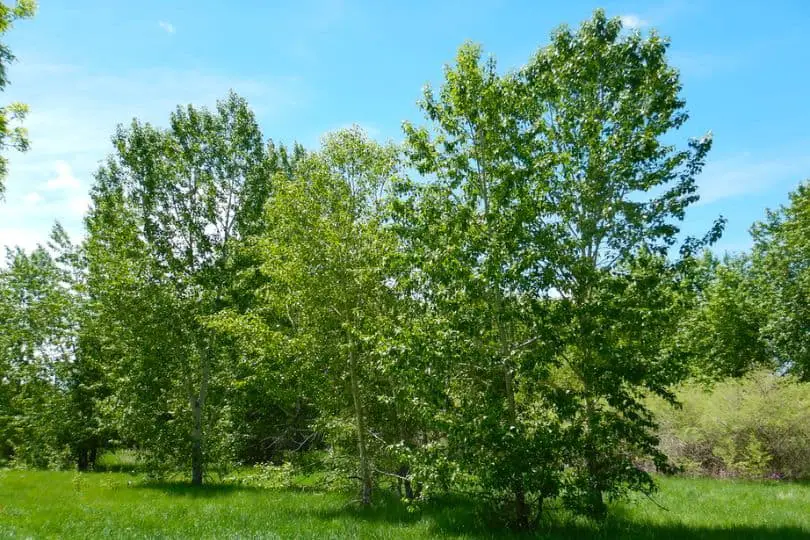
- Common Name: Balm of Gilead
- Scientific Name: Populus balsamifera
- Mature Height: 50 to 80 feet
- Native/Non-Native: Native
- Flowers/Cones: Small cotton-like fruit
- Uses: Pulp, boxes, packing cases, rough lumber
The Balm of Gilead is frequently misidentified as an aspen due to the fact that both trees belong to the same genus. However, this tree is entirely different, and they are also known as Balsam Poplar.
It is a tall and magnificent tree that may grow up to 80 feet tall and 3 feet or more in diameter. It features a small and straight top that gradually broadens.
This tree’s leaves are oval in shape with coarsely serrated edges. They’re dark green and lustrous on top, and pale with rusty undertones. The tree’s bark is brown-gray, heavily furrowed, and gray-black on old trunks.
The Balm of Gilead is distinguished by its enormous and pointed golden-yellow buds, which resemble balsam and have a powerful, pungent perfume. These buds are thickly coated with varnish-like resin or pitch.
The wood of this tree is dense when green and light when dry. It is not exceptionally robust, but it is velvety and has a tight grain. It quickly rots when it comes into contact with the soil. It is commonly used to manufacture pulp, boxes, shipping containers, and rough lumber.
Small cotton-like fruit grow on the Balm of Gilead in May or June, and they are easily carried by the wind for large distances. This tree can be found in the northern section of the state, along streams, on the edges of wetlands, and in other chilly areas.
Aspen Trees In Minnesota – Frequently Asked Questions (FAQs)
Aspen trees are very common in the Minnesota region. And in this section, I will be going through some of the commonly asked questions related to native and common aspen trees in Minnesota.
Can aspen trees grow in Minnesota?
Aspen trees do grow in Minnesota. In fact, there are two varieties of aspen trees that are native to Minnesota and are one of the state’s most common tree species. They are well-adapted to the climate of the state and can grow in a variety of soils and moisture conditions. Another interesting point to note is that, quaking aspens is considered to be the most abundant tree in Minnesota.
Are birch and aspen trees in Minnesota the same?
No, birch and aspen trees are not the same. In fact, they belong to completely two different genera. Birch trees are members of the Betula genus, and their bark is distinctively white and peels off in papery sheets. Aspen trees are members of the Populus genus, and their bark is smooth and grayish with small black markings called lenticels. Furthermore, birch leaves are triangular in shape with a pointed tip, whereas aspen leaves are more rounded with a pointed base.
Are poplar and aspen trees in Minnesota the same?
Poplar and Aspen trees belong to the same genus, but they are two different tree species. They are similar in many ways, including their rapid growth rate, tall stature, and ability to regenerate from roots and cuttings. However, there are some differences between the two species, including leaf shape and bark pattern.
Similar Articles
- Native Flowering Trees In Minnesota
- Native Pine Trees In Minnesota
- Native Oak Trees In Minnesota
- Native Maple Trees In Minnesota
- Native Ash Trees In Minnesota
- Native Birch Trees In Minnesota
- Native Elm Trees In Minnesota
- Native Cherry Trees In Minnesota
- Native Spruce Trees In Minnesota
- Native Hickory Trees In Minnesota
- Native Cedar Trees In Minnesota
Sources
The Regional Gardening team makes sure that the information in our articles is accurate by only using sources that are known to be trustworthy. Some of these sources are peer-reviewed journals from government agencies, well-known universities, and scientific research organizations.
- Minnesota’s Native Trees, Department Of Natural Sciences, Minnesota State.
- Forestry Division, Minnesota State.
- Yard And Garden, University Of Minnesota Extension
- Native Plants, University Of Minnesota Extension
- Select Trees And Shrubs For Minnesota Landscapes, University Of Minnesota Extension
- Trees and shrubs for pollinators, University Of Minnesota Extension
- Department Of Agriculture, Minnesota State.


